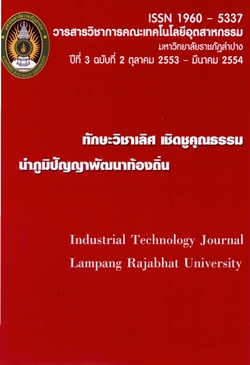The Development of Ranque-Hilsch Vortex Tubes: Computational models
คำสำคัญ:
RHVT, Computational Method, thermal separation effect, Efficiencyบทคัดย่อ
The Ranque Hilsch vortex tube, RHVT, is well-known for its unique function. This can be observed when a compressed air passes through the tube inlet. The thennal separation effect results in hot and cold streams which could be produced simultaneously. Many researchers investigated the RHVT mechanism and perfonnance using computational method. There are a number of computational models presented as to explain the driving mechanism of the RHVT and to predict the RHVT performance. In this article, the development of the RHVT based computational method is reviewed. The important results from those models are presented for the benefit of future research in this field.ดาวน์โหลด
ฉบับ
ประเภทบทความ
บทความวิจัย






